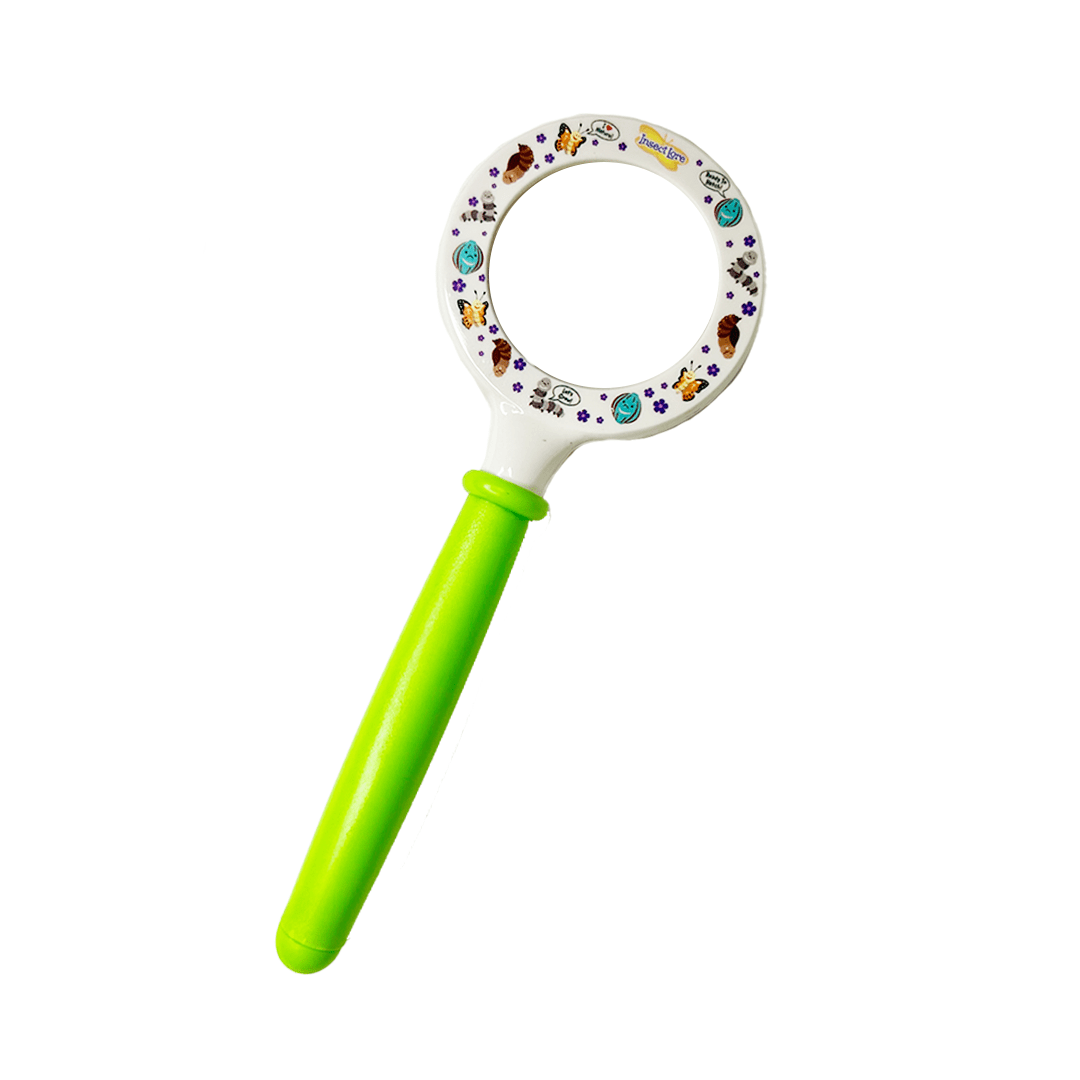Add description, images, menus and links to your mega menu
A column with no settings can be used as a spacer
Link to your collections, sales and even external links
Add up to five columns
Add description, images, menus and links to your mega menu
A column with no settings can be used as a spacer
Link to your collections, sales and even external links
Add up to five columns
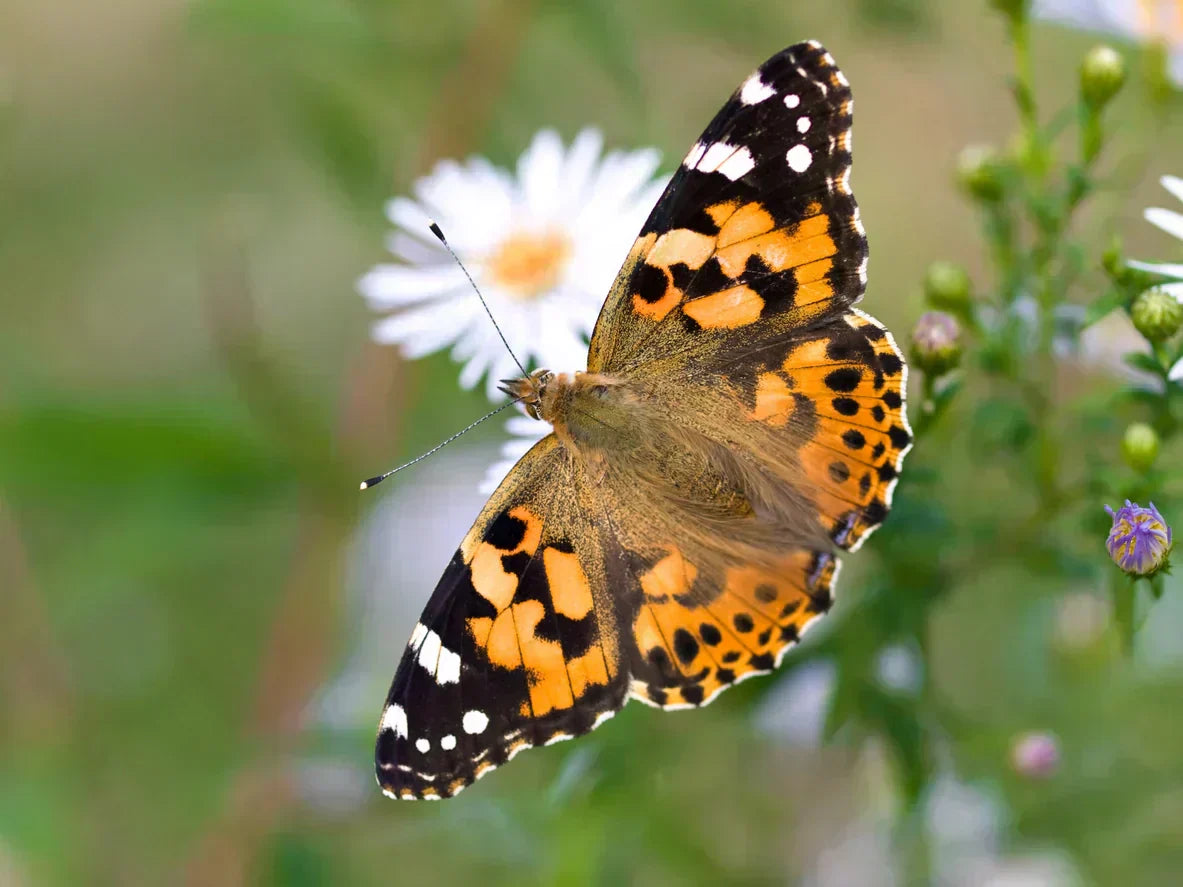
10 Painted Lady Butterfly Facts for Kids
By Spencer McManamna March 25, 2024 13 min read
Welcome to the colorful and endlessly surprising world of the Painted Lady butterfly! As one of the most widespread and recognized butterfly species, the Painted Lady holds a special place in the wonderful world of nature. Join us as we take flight on an enchanting journey to uncover the fascinating facts and wonders surrounding this exquisite butterfly. You can also read other interesting facts about butterflies in our other blog!
1. Painted Lady Butterflies Are Speedy Flyers
The Painted Lady butterfly (Vanessa cardui) is known for its impressive flying capabilities, including its ability to reach speeds of up to 20 miles per hour. Painted lady butterflies have large, strong wings relative to their body size. Their wings are designed with intricate patterns of veins that provide structural support and flexibility for efficient flight. Additionally, their flight muscles are highly developed and capable of generating rapid wing beats, enabling them to achieve high speeds.
Their Wings are Very Aerodynamic
Painted Lady butterflies possess streamlined bodies and wings that are adapted for efficient aerodynamic performance. Their wings are elongated and narrow, which reduces air resistance and drag during flight. This streamlined shape allows them to cut through the air with minimal energy expenditure, enabling them to achieve faster speeds.
Their Flight Muscles are Strong and Efficient
Painted Lady butterflies have evolved highly efficient flight muscles that enable them to sustain rapid wing beats for extended periods. These muscles contract and relax rapidly, providing the power needed to propel the butterfly through the air at high speeds.
Benefits of Speedy Flight
The ability of Painted Lady butterflies to fly at speeds of up to 20 mph is advantageous for many reasons, particularly in terms of long-distance travel and their ability to evade and outwit predators.
Migratory Advantages
Painted lady butterflies are known for their extensive and impressive migratory behavior, undertaking long-distance journeys spanning thousands of miles. Their ability to fly at high speeds allows them to cover large distances relatively quickly, facilitating migration between breeding and overwintering sites.
Food Location
Flying at higher speeds enables painted lady butterflies to search for food more efficiently. They can cover greater distances in search of nectar-rich flowers, allowing them to locate and exploit floral resources more effectively.
Defense Against Predators
High-speed flight provides painted lady butterflies with an effective means of escaping from predators. By rapidly accelerating and maneuvering in flight, they can evade capture by predators such as birds and insects, increasing their chances of survival.
2. Painted Lady Butterflies Have the Longest Migration Journey
Migration refers to the seasonal movement of animals from one region to another, typically over long distances, in response to changing environmental conditions such as changes in temperature, food availability, or breeding opportunities.
Migration Distance
The migration of the painted lady butterfly involves an extraordinary journey spanning over 9000 miles from Africa to the Arctic and back. This journey is characterized by multiple generations of butterflies traveling across continents to exploit seasonal resources and breeding opportunities.
Migration Schedule
Unlike many other migratory species that follow a predictable seasonal pattern, painted lady butterfly migrations do not adhere to a strict schedule. Instead, these migrations are triggered by favorable environmental conditions and the availability of suitable food sources. Painted lady butterflies are highly adaptable and can respond quickly to changes in their environment, allowing them to undertake migrations at different times of the year as conditions dictate.
Generational Migration
The migration of painted lady butterflies typically spans multiple generations, with each generation playing a specific role in the overall journey. The journey begins with the emergence of adult butterflies in Africa, where they breed and produce successive generations of offspring.
As Painted Lady butterflies migrate northward, they continue to breed and lay eggs along the way, with subsequent generations continuing the journey. It may take approximately six generations of butterflies to complete the migratory cycle from Africa to the Arctic and back.
Migrational Influence
During each stage of the migration, painted lady butterflies rely on favorable wind patterns, temperature gradients, and the availability of suitable host plants and nectar sources to sustain their journey. This remarkable feat of endurance and adaptability highlights the incredible evolutionary adaptations that allow painted lady butterflies to undertake one of the longest and most complex migrations observed in the insect world.
3. Painted Lady Butterflies Only Live 2-4 Weeks
The Painted Lady butterfly has a relatively brief lifespan, with individual adults typically living for only a few weeks to a couple of months. During this short period, their primary focus is on reproduction, as is the case with many other species of butterflies.
How Do Painted Lady Butterflies Reproduce?
Wondering how butterflies procreate? Painted Lady butterflies allocate much of their time and energy towards finding mates and laying eggs. So, how do butterflies breed? Male butterflies actively seek out females for mating, while females search for suitable host plants on which to lay their eggs. Once a female finds a suitable host plant, she deposits her eggs on the leaves, typically choosing plants that will provide suitable food for the emerging caterpillars.
The relatively short lifespan of Painted Lady butterflies places an emphasis on efficient reproduction within the limited time available to them as adults. This short lifespan is due to various factors, including predation, environmental stressors, and the energetically demanding process of reproduction.
How Many Offspring Do Painted Lady Butterflies Have?
Given their brief adult lifespan, Painted Lady butterflies must maximize their reproductive success during the time they are active. This often involves mating multiple times and laying multiple batches of eggs. By producing a large number of offspring, individuals increase the likelihood that at least some of their offspring will survive to adulthood and continue the next generation.
Painted Lady butterflies have evolved various adaptations to enhance their reproductive success. These include specialized behaviors for finding mates and suitable egg-laying sites, as well as physiological adaptations for producing and laying eggs efficiently.
4. One Painted Lady Female Butterfly Can Lay Up to 500 Eggs
Include an image that depicts a cluster of painted lady butterfly eggs.
Painted Lady butterflies have a relatively short development time from egg to adult, typically ranging from a few weeks to a couple of months depending on environmental conditions. As a result, individuals emerge from their chrysalis as fully developed adults ready for reproduction within a relatively short period of time.
The Role of Host Plants for Egg Laying
Female Painted Lady butterflies are capable of locating suitable host plants for egg-laying soon after emerging from their chrysalis. They use visual and olfactory cues to identify appropriate host plants that will provide suitable food for their offspring. Once a suitable host plant is found, females can begin laying eggs within a few days of emergence, allowing them to maximize their reproductive output during their short adult lifespan. One female can lay up to 500 eggs at a time!
Painted Lady butterflies are adapted for rapid and efficient reproduction, allowing them to lay a large number of eggs in a short period of time and start laying eggs soon after emerging from their chrysalis. These adaptations enable them to maximize their reproductive success and contribute to the persistence of their species in various habitats.
5. Painted Lady Caterpillars Are Nocturnal
Nocturnal refers to animals or organisms that are primarily active during the night or twilight hours, as opposed to being active during the day (diurnal). Painted Lady caterpillars are nocturnal because there are many survival benefits of being inactive during the day!
Protection Against Extreme Temperatures
Nocturnal animals often inhabit environments where daytime temperatures are extreme, such as deserts or tropical regions. Being inactive during the day helps them avoid the heat and conserve energy. They can utilize the cooler nighttime temperatures to carry out essential activities such as foraging or hunting without the risk of overheating.
Protection Against Predation
Many predators, especially diurnal ones, rely on vision to locate and capture their prey. By remaining inactive during the day, nocturnal animals minimize their risk of predation, as they are less likely to be detected by visually-oriented predators. This nocturnal behavior allows them to exploit the darkness as cover, reducing their vulnerability to predation.
Less Competition for Food
Some food sources, such as insects or flowers, may be more abundant or accessible during the night. Nocturnal animals have adapted to exploit these nocturnal resources, allowing them to capitalize on food availability when competition is lower. Additionally, being active at night may provide access to certain prey species that are more active during the dark hours.
Fewer Disturbances
Nocturnal animals may also benefit from reduced disturbance from human activities and diurnal animals during the night. Human disturbances such as noise, traffic, and habitat modification are typically reduced during the night, allowing nocturnal animals to carry out their activities with less interruption.
6. Painted Lady Caterpillars Love Eating Invasive Weeds!
Painted Lady caterpillars are known to feed on a variety of plant species, including both native and invasive weeds. Some of the invasive weeds that Painted Lady caterpillars prefer include:
Thistles
Thistles are a group of flowering plants belonging to the Asteraceae family. Many species of thistles are considered invasive weeds in various regions. Painted Lady caterpillars are known to feed on the leaves of thistle plants, making them a preferred food source.
Mallows
Mallows, also known as members of the Malvaceae family, include several species that are considered invasive weeds in certain areas. Painted Lady caterpillars may feed on the leaves of these plants, utilizing them as a food source.
Nettles
Nettles are herbaceous plants known for their stinging hairs and invasive tendencies. Despite their defensive mechanisms, Painted Lady caterpillars can feed on the leaves of nettles, utilizing them as a food source during their larval stage.
Dock
Dock plants, belonging to the Rumex genus, are common invasive weeds in many regions. Painted Lady caterpillars may consume the leaves of dock plants, utilizing them as a food source.
Other Weedy Plants
Painted Lady caterpillars may also feed on various other weedy plants, including members of the Asteraceae, Fabaceae, and other plant families that are considered invasive in certain regions.
Some food sources consumed by Painted Lady caterpillars contain chemical compounds or physical characteristics that make them unpalatable or even toxic to potential predators. This is a form of chemical defense or aposematism, where the caterpillars advertise their unpalatability to predators through bright colors or other warning signals.
For example, certain plants contain secondary compounds such as alkaloids or glycosides that can be toxic to predators when ingested. Painted Lady caterpillars sequester these compounds from their food plants, making them distasteful or harmful to predators that attempt to consume them.
7. Painted Lady Caterpillars Are Eating Machines
Painted Lady caterpillars exhibit tremendous growth and feeding rates, enabling them to eat large quantities of plant material and rapidly increase in size during their relatively short larval stage. Several factors contribute to their ability to consume up to 200 times their birth weight in only two weeks!
High Feeding Efficiency
Painted Lady caterpillars have voracious appetites and consume plant material at a rapid rate. They possess specialized mouthparts adapted for chewing and processing plant tissue efficiently. This high feeding efficiency allows them to ingest large quantities of food in a relatively short period.
Rapid Digestion and Metabolism
Painted Lady caterpillars have fast digestive systems and metabolisms that enable them to process food quickly and extract nutrients efficiently. They efficiently break down complex plant compounds into simpler molecules that can be absorbed and used by their bodies for growth and development.
Continuous Feeding Behavior
Painted Lady caterpillars exhibit continuous feeding behavior throughout their larval stage, often feeding almost continuously when food is readily available. This constant feeding activity maximizes their food intake and contributes to their rapid growth rate.
High Nutrient Requirements
As rapidly growing organisms, Painted Lady caterpillars have high nutrient requirements to support their growth and development. They need big amounts of protein, carbohydrates, fats, vitamins, and minerals to fuel their metabolic processes and build new tissues. Their ability to consume large quantities of food allows them to meet these nutrient demands and fuel their rapid growth.
Energy Storage for Metamorphosis
During their larval stage, Painted Lady caterpillars accumulate energy reserves in the form of fat and other storage compounds. These energy reserves are essential for fueling the dramatic metamorphosis into adult butterflies. By consuming large amounts of food and storing energy efficiently, the caterpillars ensure that they have sufficient resources to complete their transformation into butterflies.
Eating for Protection
Some food sources consumed by Painted Lady caterpillars contain chemical compounds or physical characteristics that make them unpalatable or even toxic to potential predators. This is a form of chemical defense or aposematism, where the caterpillars advertise their unpalatability to predators through bright colors or other warning signals.
For example, certain plants contain secondary compounds such as alkaloids or glycosides that can be toxic to predators when ingested. Painted Lady caterpillars sequester these compounds from their food plants, making them distasteful or harmful to predators that attempt to consume them.
8. Painted Lady Caterpillars Spend 7-10 Days Inside Their Chrysalis
During the 7-10 day timeframe spent in the chrysalis, also known as the pupal stage, a caterpillar undergoes a remarkable process of metamorphosis as it transforms into a butterfly. It may look very still, but there is a lot happening beneath the surface! This transformation involves several distinct stages:
Attachment and Formation of Chrysalis
Before pupation, the caterpillar typically seeks out a suitable location to undergo metamorphosis, such as a branch or leaf. It attaches itself securely using silk threads produced by specialized glands. Once attached, the caterpillar's body undergoes internal changes in preparation for pupation.
Formation of Pupal Case
The caterpillar's outer skin, or cuticle, hardens and forms a protective outer casing known as the chrysalis. This pupal case provides structural support and protection for the developing pupa inside!
Cellular Differentiation
Inside the chrysalis, the caterpillar's body undergoes extensive cellular differentiation and restructuring. Various tissues and organs are broken down and reorganized to form the structures of the adult butterfly. This process involves the activation and expression of specific genes that regulate the development of adult characteristics.
Tissue Remodeling
During metamorphosis, the caterpillar's body undergoes dramatic changes in shape and structure. Muscles, nerves, and other tissues are completely reorganized inside the chrysalis to form the wings, legs, antennae, and other adult structures. This tissue remodeling process is orchestrated by hormonal signals and biochemical pathways that control cellular growth and differentiation.
Digestion and Nutrient Recycling
To fuel the metamorphic process, the caterpillar breaks down and recycles some of its own tissues, including parts of the digestive system. Nutrients released from these tissues are used to fuel the development of adult structures within the pupal case.
Pigmentation and Coloration
Pigment cells called chromatophores produce pigments that give color to the wings, body, and other structures of the emerging butterfly. The formation of pigments and color patterns is regulated by genetic factors and environmental cues.
Development of Wings and Appendages
As the pupa matures, the developing wings become visible through the translucent pupal case. Wing veins, scales, and other specialized structures begin to form, preparing the butterfly for flight and other adult behaviors.
Emergence of Adult Butterfly
After 7-10 days, the metamorphic process is complete, and the fully developed butterfly emerges from the chrysalis. The newly emerged butterfly pumps fluid into its wings to expand them fully, and it hangs upside down to allow its wings to dry and harden. Once its wings are fully developed and functional, the butterfly is ready to take flight and begin its adult life stage.
9. Painted Ladies Emerge From Their Chrysalides Fully Grown
The phenomenon of insects emerging as fully grown adults from their pupal stage, as opposed to undergoing additional growth after emergence, can be attributed to several factors, including evolutionary adaptations and ecological niche requirements.
Pupal Stage Development Benefits
In species where individuals emerge as fully grown adults, the timing of development is tightly regulated to ensure synchronization with favorable environmental conditions for mating, reproduction, and survival. By completing development within the pupal stage, these insects can emerge at an optimal time to exploit available resources and maximize reproductive success.
Resource Allocation
Emerging as fully grown adults may allow insects to allocate resources more efficiently, focusing energy and nutrients on development and maturation within the pupal stage rather than continuing growth after emergence. This strategy may be advantageous in environments where resources are limited or unpredictable, enabling individuals to complete development with minimal resource investment.
Reduced Vulnerability
Spending less time vulnerable to predation as vulnerable immatures may reduce the risk of mortality during development. In species where individuals emerge fully grown, the shorter developmental period may minimize exposure to predators and increase survival rates, particularly in environments with high predation pressure.
Enhanced Reproduction & Colonization
The emergence of fully grown adults may be part of a species' broader life history strategy, optimized for rapid colonization of new habitats, exploitation of ephemeral resources, or adaptation to specific ecological niches. By emerging fully developed, individuals can quickly establish themselves in the environment and begin reproductive activities, contributing to population persistence and expansion.
In some cases, the emergence of fully grown adults may be an adaptation to specific habitats or environmental conditions. For example, in habitats with short-lived resources or unpredictable environmental cues, finishing development within the pupal stage allows individuals to take advantage of brief windows of opportunity for reproduction and dispersal.
Overall, the emergence of fully grown adults from the pupal stage represents an evolutionary adaptation shaped by ecological, physiological, and developmental constraints. This strategy offers potential advantages in terms of timing, resource allocation, predation risk reduction, life history strategies, and adaptation to specific habitats, enabling insects to thrive in diverse ecological contexts.
H2: 10. Painted Lady Butterflies Live in All Lower 48 States
The Painted Lady butterfly is known for its remarkable adaptability to a wide range of environments, making it one of the most widely distributed butterfly species in the world. Many factors contribute to their ability to live and thrive in all lower 48 states in the US:
Long Distance Migrations
Painted Lady butterflies are capable of long-distance migrations, allowing them to colonize new habitats and exploit seasonal resources over vast geographic areas. Their migratory behavior enables them to respond to changing environmental conditions, such as temperature, precipitation, and food availability, by moving to more favorable locations.
Short Life Cycles
Painted Lady butterflies have a relatively short life cycle, with adults capable of reproducing within a few days of emerging from the pupal stage. This rapid reproduction allows them to quickly establish populations in new habitats and take advantage of favorable conditions for breeding and feeding.
Diverse Environment Adaptations
Painted Lady butterflies exhibit generalist behaviors and ecological traits that enable them to adapt to diverse environmental conditions. They are not highly specialized in terms of habitat requirements, food preferences, or reproductive strategies, allowing them to thrive in a wide range of ecosystems.
Physiological and Behavioral Adaptations
Painted Lady butterflies have evolved physiological and behavioral adaptations that enable them to tolerate a range of environmental conditions, including temperature extremes, fluctuating moisture levels, and habitat disturbance. They can regulate their body temperature through basking behavior and adjust their activity patterns in response to ever- changing environmental cues.
Strong Flight Capabilities
Painted Lady butterflies possess strong flight capabilities and can disperse over long distances, facilitating movement between habitats and populations. This high dispersal ability enhances genetic exchange, population connectivity, and colonization of new habitats.
Behavioral Plasticity
Painted Lady butterflies exhibit life history plasticity, allowing them to adjust their behavior, morphology, and life cycle timing in response to environmental cues and stressors. This flexibility enables them to exploit diverse habitats and cope with changing environmental conditions.
The Painted Lady butterfly's adaptability to a variety of environments is attributed to its broad host plant range, migratory behavior, rapid reproduction and life cycle, tolerance to environmental variation, and high dispersal ability. These adaptive traits enable it to thrive in diverse ecosystems worldwide and contribute to its success as a widely distributed and beloved butterfly species!
Explore the Interesting Lives of Painted Lady Butterflies with Insect Lore!
Curious to learn even more about Painted Lady butterflies? Check out our Butterfly Garden Kits!

Also in Butterflies
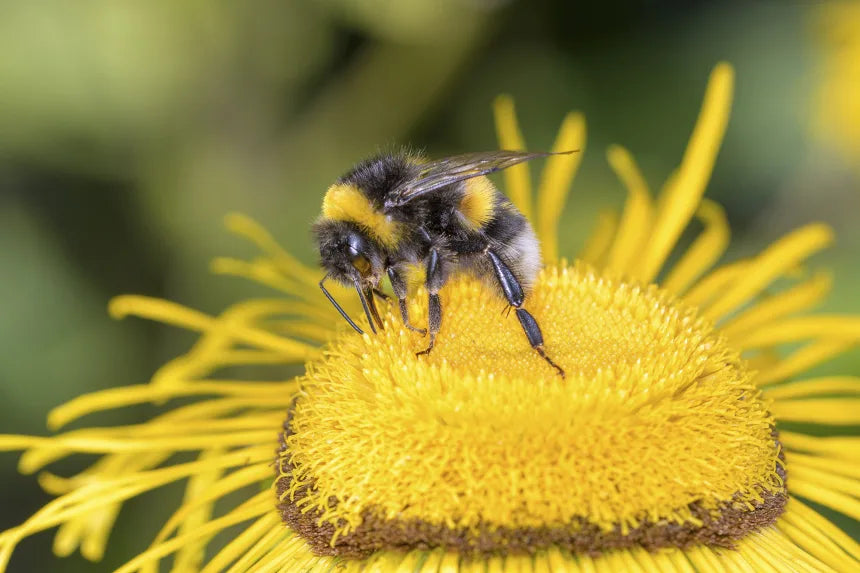
Ultimate Guide to Pollinators
December 15, 2025 8 min read
Pollination is the transfer of pollen from an anther of a plant to the stigma of a plant, which makes fertilization and the production of seeds possible. Read on to discover the uniquely incredible world of pollination, which brings so many priceless gifts to our own world.
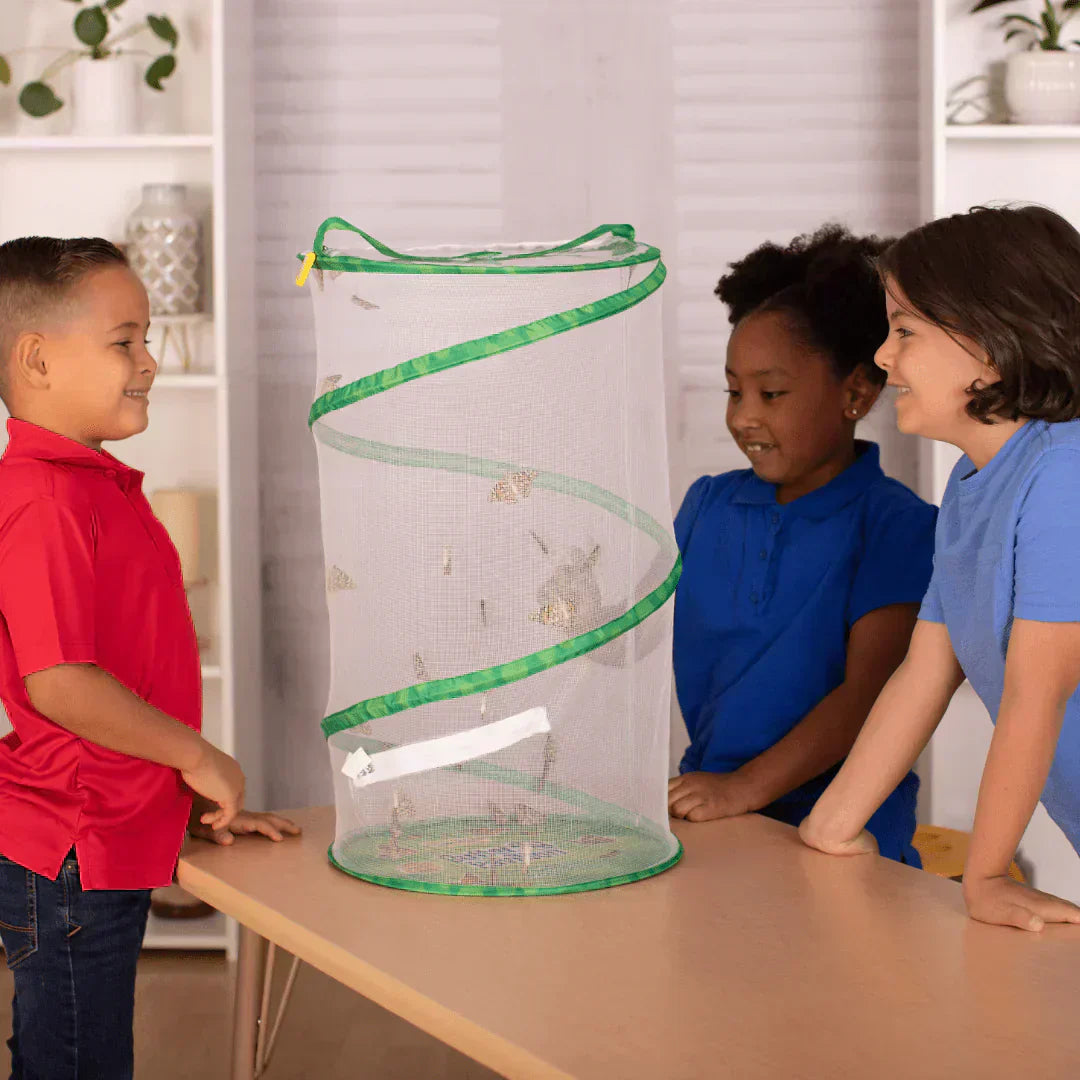
Tips for Implementing STEM Education in the Elementary Classroom
December 11, 2025 4 min read
In this article, we'll help explain practical strategies for bringing STEM into daily instruction and will explore specific butterfly-metamorphosis activities that enrich your students’ scientific understanding!
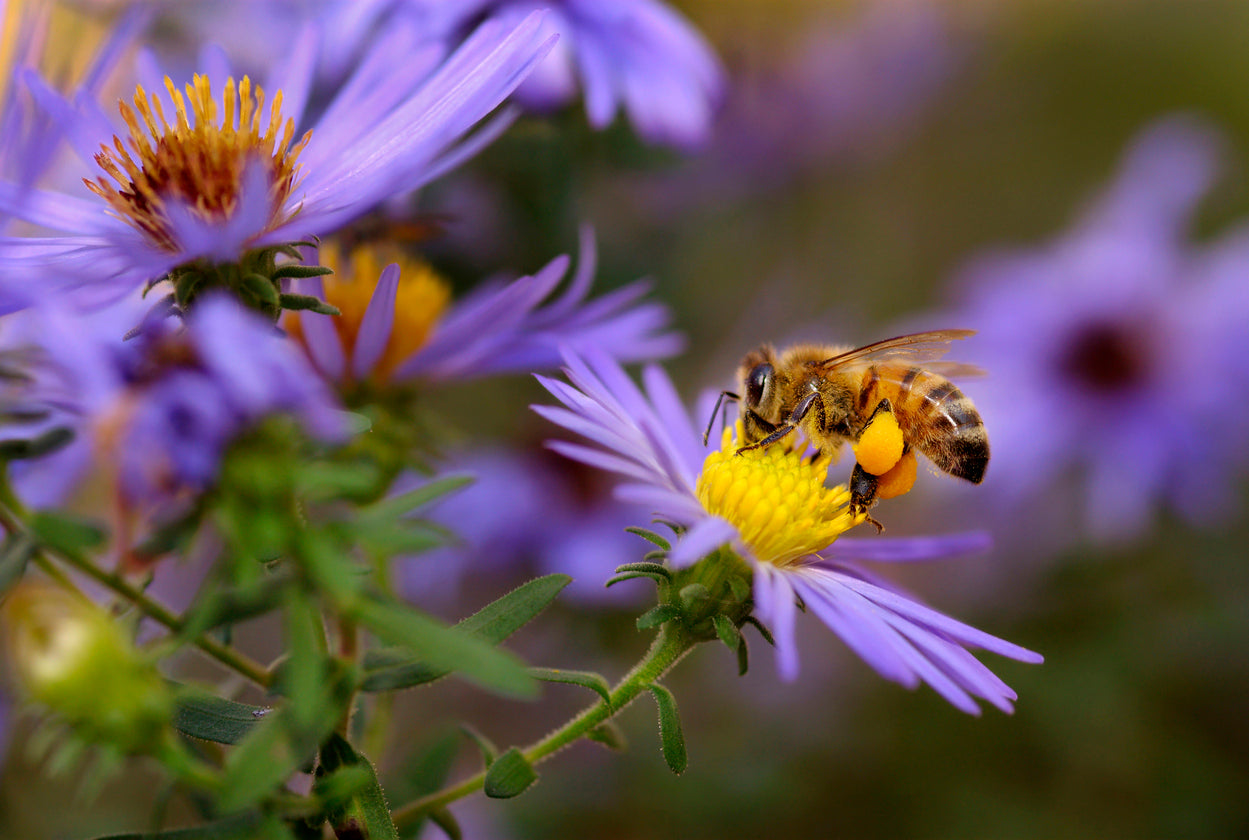
History of National Pollinator Month
December 11, 2025 4 min read
National Pollinator Month, observed every June, is dedicated to raising awareness about the essential role pollinators play in sustaining our ecosystems, agriculture, and global food supplies.

Enter Your Voucher Code Below
If you are experiencing difficulty redeeming your voucher on your desktop, please use a mobile device for a better redeeming experience.

We are unable to combine redemption fees. If you are redeeming 1-5 voucher codes, please complete separate purchases through our website for each voucher. If you are redeeming 6+ vouchers, please email us at customerservice@insectlore.com with your voucher codes and shipping address and we'll send you a custom invoice for payment.
Thank you for Redeeming your voucher!
You redeemed a $title

Don't miss this special one Time Offer.
Check the Box to Add this Special Offer to your Cart

Don't miss this special one Time Offer.
Check the Box to Add this Special Offer to your Cart
It looks like you are an Insect Lore UK/EU customer! You are visiting the Insect Lore USA website.
Click Insect Lore UK/EU website to be redirected to insectlore.co.uk.


